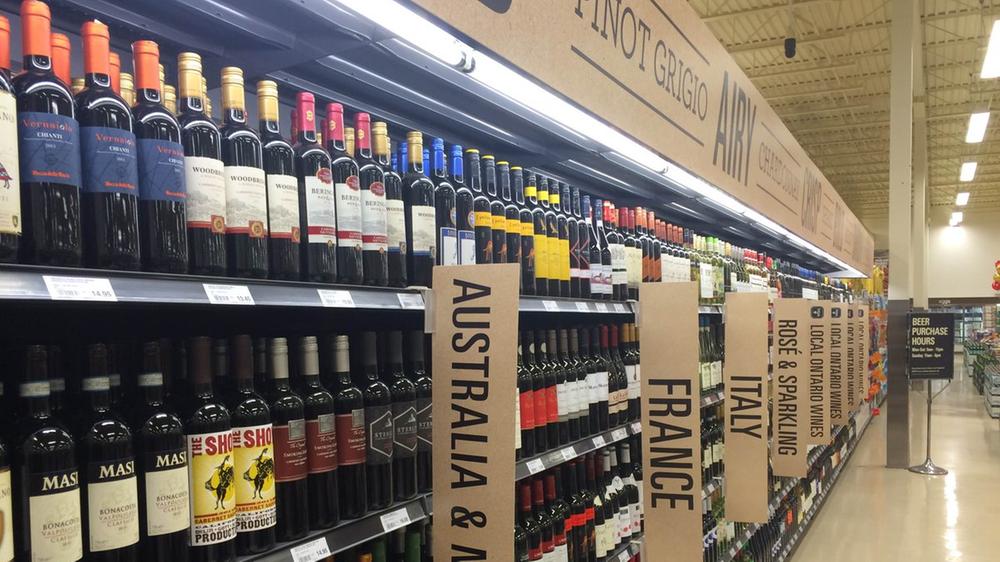By: Alyssa L. Ochs
As wineries first launch their operations or begin to grow larger, they have the option to either buy their own bottling machines or hire a mobile bottling company. Both of these options have their advantages and disadvantages; however, having your own bottling line can give you greater flexibility and control over the bottling process.
With the input of bottling companies who work with wineries on a regular basis, here is some information about the bottling machine options available to wineries today and how to choose the right machine for your operations.
Types of Wine Bottling Machines
When you’re looking at new bottling machines, important considerations are the machines’ sizes, speeds and efficiency. There are options for automatic filling and semi-automatic filling machines, as well as machines that work well with both wine corks and caps.
Many small wineries start out with limited equipment for bottling, such as a basic bench-top manual filler and semi-automatic labeler. Then as these wineries grow, they must decide whether to purchase a bottling line, lease a bottling line, or hire a mobile bottler. To assess the size of bottling line needed, wineries must consider the total annual production, projected goals for the next five years and what a normal production day looks like for the staff.
Matt DiDonato from the sales team at Prospero Equipment Corp. in Pleasantville, New York told The Grapevine Magazine how there are lots of options for wineries today, including semi-auto counter pressure fillers for carbonated products and standard gravity fillers for still wine products.
“There are automatic machines that can fill both still and carbonated products from the same filler valve,” DiDonato said. “The speeds can range from 1,200 BPH up to 16,000 BPH.”
Prospero has over 40 years of experience in the beverage industry and offers machines for bottling, capping and labeling, as well as packaging solutions for wineries. Prospero’s most popular machine among wineries is the GAI 1301 unit, which can run up to 1,600 bottles per hour.
“It leaves plenty of room for growth for wineries to bottle up to 10,000 to 15,000 cases and beyond,” DiDonato said. “It also has an option to be equipped with a built-in rotating turret to do both cork and screw cap closures.”
Scott Anderson, the national sales manager for Inline Filling Systems (IFS), told The Grapevine Magazine about IFS’s offerings for semi-automatic and fully automatic solutions for wine filling. Based in Venice, Florida, Inline Filling Systems offers turnkey liquid packaging installations with over 700 packaging machinery products and engineering experience spanning 20 years.
“Our semi-automatic units require operator involvement and do not have moving conveyors,” Anderson said. “These units are very efficient and still yield high production outputs in a small footprint. IFS automatic wine filling equipment can produce more than 100 750-milliliter bottles per minute if necessary. Powered conveyors and bottle management components move bottles to and away from the filling machine and the PLC controls on the filling machines initiate the filling cycles as long as bottles are provided to the filler.”
For wine filling, IFS provides time gravity and overflow filling machines. Both of these systems are effective, but a client’s product, application and needs will guide a decision about which one to purchase.
“All of IFS’s machinery is application-specific and involves client feedback with regard to the unique product properties and production goals, Anderson said. “IFS has clients that use both types of filling machines for wine packaging.”
Based in San Luis Obispo, California, XpressFill Systems LLC has offered a premium bottle-filling system since 2007 that is designed with the highest quality components, ensuring ease of use and long life. Randy Kingsbury of XpressFill said that his company specializes in compact table-top fillers that are affordable and easy to operate. These machines are available in a two-spout and a four-spout configurations with fill rates of 240 to 450 bottles per hours, respectively.
“Either configuration weighs less than 25 pounds, with a physical size similar to a case of wine,” Kingsbury said. “By using an efficient flow path there is very little waste due to priming for the initial fills or leftover wine in the system at completion.”
Kingsbury said that the two- and four-bottle capacity Level Fill machines are most popular in the wine industry. This is because the Level Fill machine provides a quick and accurate way to fill bottles to the same levels in the neck for excellent visual appeal.
“The optional gas sparge ensures optimum quality of the wine being delivered to the customer,” Kingsbury said. “The enclosed system minimizes exposure to the environment. Our equipment is extremely simple to set up and adjusts for various bottle sizes and to clean.”
New Bottling Machine Technology
Technology is constantly changing when it comes to machinery in the beverage industry, which is good news for wineries looking to integrate new bottling machines into their operations within the next few years. For example, DiDonato of Prospero Equipment said that electro-pneumatic filler valves are a piece of new technology that wineries are particuarly interested in.
“You can fill just about any non-viscous beverage product on this line, including wine, beer, soda, spirits, water and cider,” DiDonato said. “These valves allow for real-time adjustment from the control panel on the fly, which is a great savings of time and product loss.”
Anderson of IFS said that one of his company’s core beliefs is constant improvement, which means that their equipment is constantly being enhanced based upon client feedback and equipment performance in the field per application.
“IFS offers industrial-grade filling machines that run a wide variety of container ranges with few low-cost change parts and an easy-to-understand human-machine interface,” Anderson said. “IFS filling technology offers our clients the lowest total cost of ownership of equipment in the liquid filling industry. IFS filling equipment provides wineries tools to make them more profitable and efficient and offers their consumers a higher quality product than other solutions.”
Kingsbury of XpressFill said that the newest developments in the wine industry relate to the types of packaging used for going to market.
“There has been a real push to provide a type of packaging that yields better shelf life and is more versatile for settings where bottles are not allowed because of possible breakage,” Kingsbury said. “An increasingly popular option is providing wine in cans, with wine-in-a-bag being another option.”
Having enough space for a bottling line is a common concern among wineries, especially smaller ones that are just starting to grow. Fortunately, new bottling equipment designs have been getting smaller in recent years to squeeze into tight spaces much better than in the past. Space-reduction technology often features machines that handle multiple purposes so that only one or two total machines are required for full functionality.
How to Choose the Right Bottling Machine
There are many factors to consider when choosing a new bottling machine, such as the ideal size of machine for your production and the cost of buying a machine rather than using an outside bottling company. Ease of use, the level of customer service provided, ongoing maintenance and repair needs and the ability to upgrade in the future are also considerations. Talk to other winemakers to see what has been working well for your peers and get machine recommendations from experts in your area who know the ins and outs of bottling. Bottling machine dealers who have good reputations often provide helpful training, tech support, and reasonable service contracts.
DiDonato from Prospero’s main piece of advice to wineries looking to buy a new bottling machine is to get references and call them.
“Make sure the machine has a good track record in the market,” he said. “Try to get data or references on the oxygen levels.”
Anderson of IFS said that IFS filling machines allow wineries and other liquid packaging professionals an opportunity to control their own destinies. This company’s robust machines are American-made and serviced and last at least 20 years.
“IFS equipment is easy to understand and operate and requires very little maintenance,” Anderson said. “Additionally, IFS offers a full-service parts center with inventories for every machine IFS has ever manufactured over the past 23 years. In short, IFS equipment allows our clients to focus on business growth rather than a financial drain trying to get other providers’ equipment to run.”
Kingsbury of XpressFill advises new wineries not to over-purchase a system that could take two or more years to reach the full capacity of the equipment.
“It can be a major financial expenditure, which takes too long to ever recover the investment, if ever,” he said.
For wineries looking for a system upgrade, Kingsbury’s advice is to perform a cost-benefit analysis based upon the downtime, maintenance and hourly operating cost of the current system versus the potential replacement.
“Although a new system may have much greater production, the time for setup, configuring for filling and cleaning after filling may be much more labor-intensive and result in a net reduction in cost effectiveness.”









